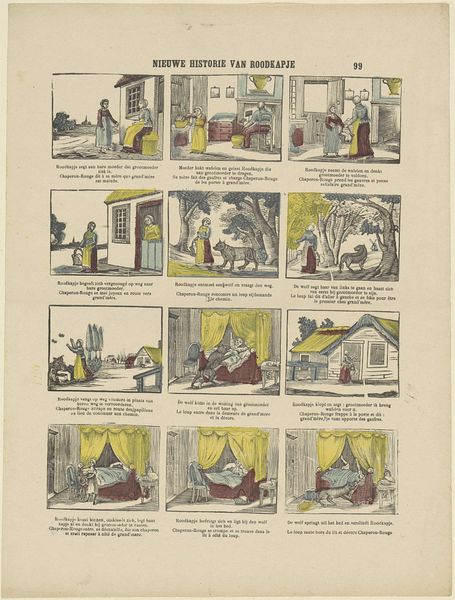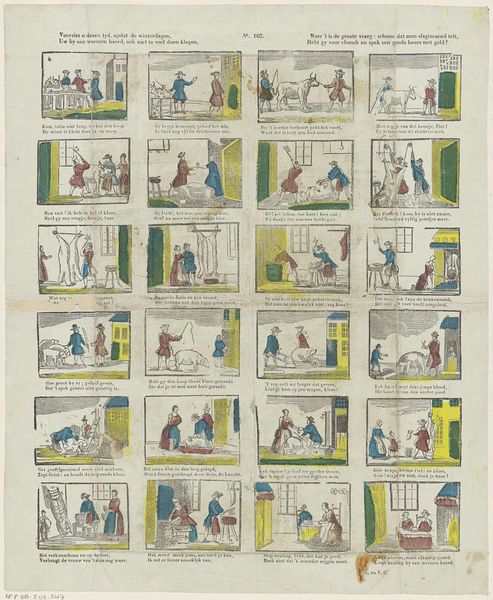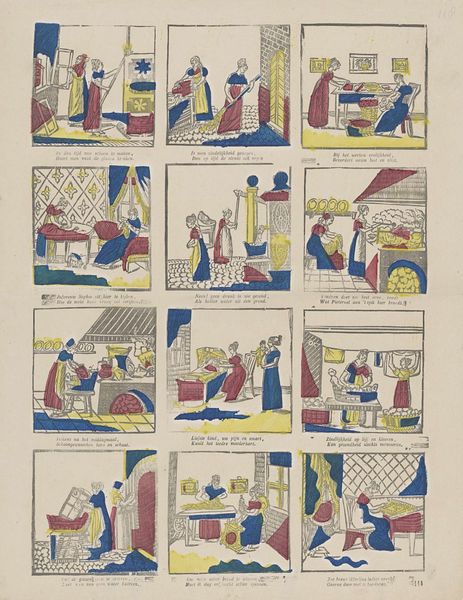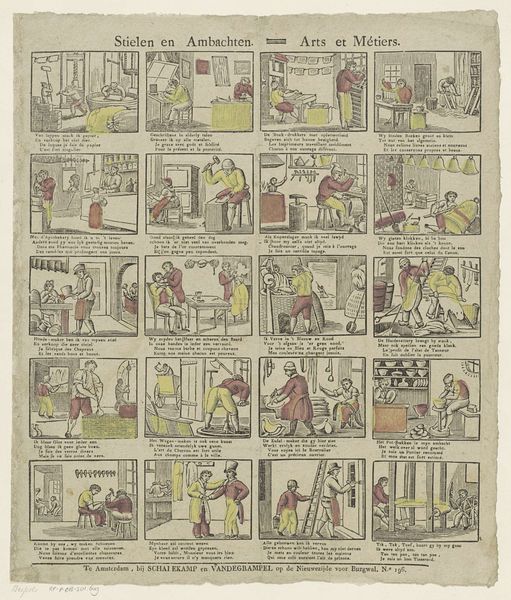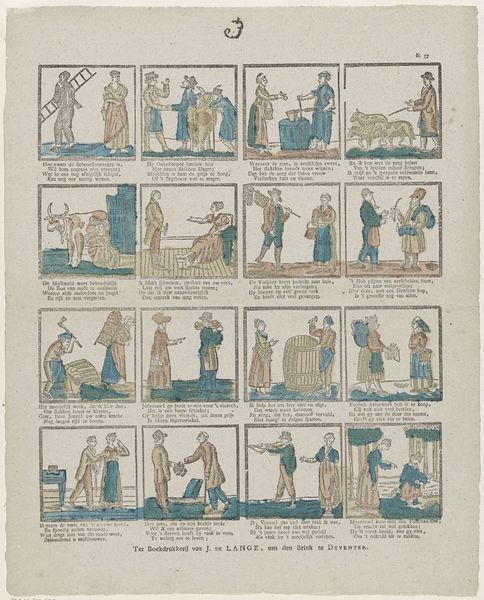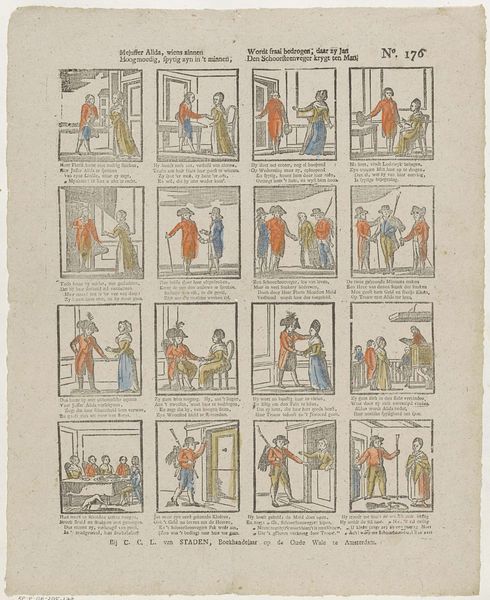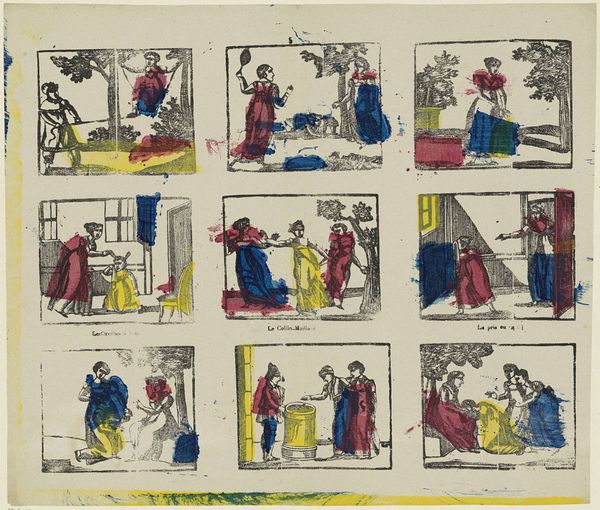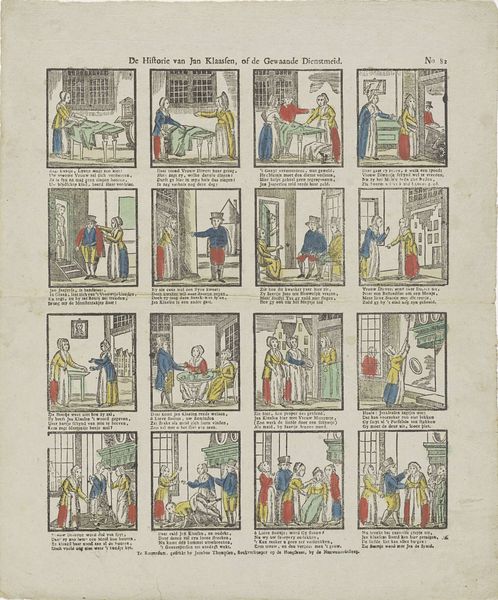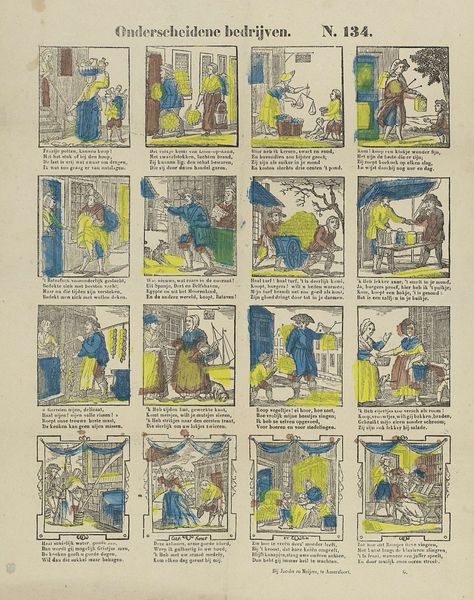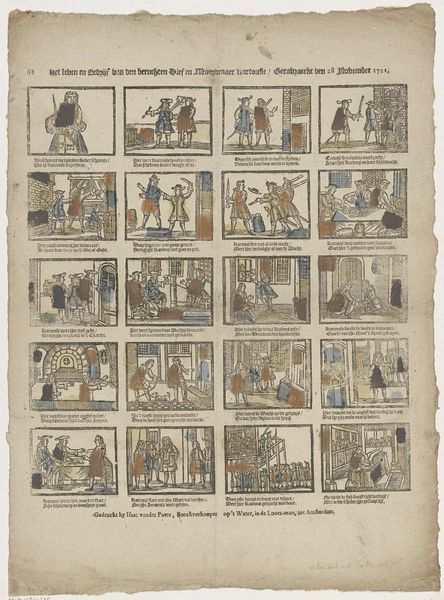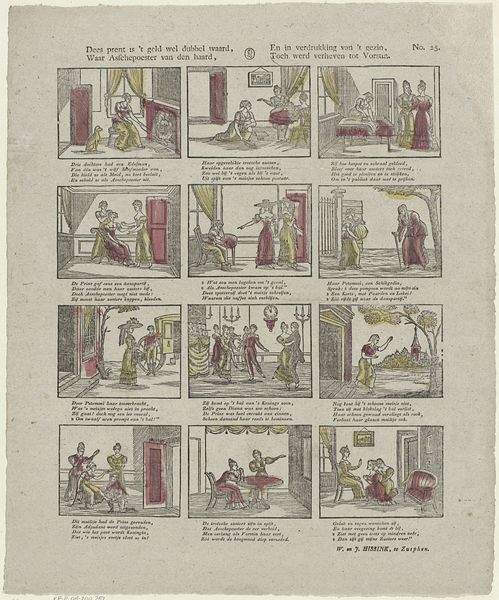
Komt, kindertjes! komt hier, wilt doctor Steven kijken, / Met zijn knecht Spring in 't Veld, gij zaagt nooit zijns gelijken 1827 - 1894
0:00
0:00
drawing, print
#
drawing
#
narrative-art
# print
#
genre-painting
Dimensions: height 361 mm, width 273 mm
Copyright: Rijks Museum: Open Domain
Curator: This is an interesting print, isn’t it? These types of prints circulated widely and became an interesting way to popularize tales that would be understood widely. Editor: Indeed. This print, “Komt, kindertjes! komt hier, wilt doctor Steven kijken, / Met zijn knecht Spring in 't Veld, gij zaagt nooit zijns gelijken”, which roughly translates to “Come, children! come here, want to see doctor Steven, With his servant Spring in 't Veld, you never saw the likes of him,” made sometime between 1827 and 1894 by M. Hemeleers-van Houter, presents a sequence of small, busy scenes in rather muted colours. It feels like a precursor to comic strips. I'm curious, what narrative or message do you see in this collection of scenes? Curator: Well, focusing on the print's socio-cultural relevance, consider the context of its production and consumption. Genre painting, after all, gains prominence with the rise of the bourgeoisie, with emphasis on relatable, daily experiences. But what specific tale is told here? Look at the interactions between the doctor, his servant, and the people they encounter. Is there a social critique implied? Is the "doctor" helping, or profiting, from those who require medical assistance? Does Spring in ‘t Veld fulfill a meaningful position? Editor: That's a good point. I didn’t look closely to discern its place within the history of medicine, and what its public reception would have been like. You're right, the actions depicted appear morally dubious, suggesting maybe a satire on medical practices or class dynamics of the time. It challenges any romantic ideas I had about medical care. Curator: Exactly. So, considering it now from a historical perspective, the print becomes more than just a visual narrative. It acts as a record, a piece of social commentary embedded in a larger network of cultural attitudes and anxieties. What seemed simply decorative reveals itself as a site of meaning making. Editor: That definitely reframes my perspective. Instead of merely viewing the images for aesthetic purposes, now I am wondering about its role in disseminating social commentary and ethical consideration. Curator: Precisely, that is why viewing it with an understanding of its original purpose is important. Now, the next time that you visit, think critically about this tension in all of art.
Comments
No comments
Be the first to comment and join the conversation on the ultimate creative platform.

